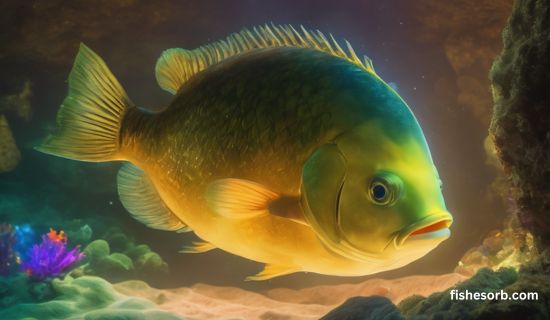In the vast realm of aquatic life, the term “chub fish” is a familiar one, encompassing a diverse array of ray-finned fish across various families and genera. This comprehensive guide aims to illuminate the multifaceted world of chub, delving into its taxonomy, habitat, behavior, and more.
Taxonomy and Classification
Chub , as a common fish name, finds its place in several families and genera. In the United Kingdom, the term primarily denotes the species Squalius cephalus. However, it’s essential to recognize that chub extends beyond this singular species, embracing a broader spectrum of aquatic inhabitants.

Families and Genera
- Family Cyprinidae
- Bigeye chub (Genus Hybopsis)
- Creek chub (Genus Semotilus)
- Fallfish (Genus Semotilus)
- European chub (Genus Squalius)
- Flame chub (Hemitremia flammea)
- Flathead chub (Genus Platygobio)
- Hornyhead chub (Genus Nocomis)
- Lake chub (Genus Couesius)
- Least chub (Iotichthys phlegethontis)
- Leatherside chub (Snyderichthys copei)
- Oregon chub (Genus Oregonichthys)
- Ponto-Caspian chub (Genus Petroleuciscus)
- Slender chub (Genus Erimystax)
- Western chub (Genus Gila)
- Genus Algansea
- Genus Notropis (Eastern shiners)
- Other Families
- Sea chub (Family Kyphosidae)
- Cisco, lake herring, chub (Coregonus artedi)
- Bloater, sometimes mistaken for Coregonus artedi (Coregonus hoyi)
- Tautog or black porgy
- Bermuda chub (Centrolophus niger)
- Chub mackerel

Habitat and Distribution
Chub fish species exhibit remarkable adaptability, thriving in a variety of aquatic environments across the globe. From freshwater rivers and streams to brackish estuaries, chub demonstrate their resilience in diverse habitats. The European chub (Squalius cephalus), for instance, is commonly found in flowing waters with gravel or rocky substrates, while creek chub (Semotilus atromaculatus) inhabit small to medium-sized streams throughout North America.
Morphology and Characteristics
Physical Attributes
Chub species vary in size and appearance, but they typically possess streamlined bodies adorned with scales. Their coloration ranges from silvery to olive-brown, often exhibiting lateral stripes or mottling for camouflage in their respective habitats. Additionally, chub are equipped with fins optimized for maneuverability, aiding in their swift navigation through water currents.

Behavioral Traits
Chub fish are known for their omnivorous diet, consuming a diverse array of plant matter, insects, crustaceans, and small fish. Their feeding behavior is opportunistic, with some species displaying preference for certain food sources depending on availability and environmental conditions. Furthermore, chub exhibit social behavior, often congregating in schools for enhanced protection and foraging efficiency.
Conservation Status and Concerns
While many chub species maintain stable populations, certain factors pose threats to their long-term survival. Habitat degradation, pollution, overfishing, and invasive species introduce challenges to chub ecosystems, necessitating conservation efforts to safeguard their biodiversity. Collaborative initiatives focused on habitat restoration, pollution mitigation, and sustainable fishing practices play pivotal roles in preserving chub populations for future generations.

Conclusion
In conclusion, chub fish represent a diverse and resilient group of fish species, encompassing various genera and families across different continents. From their taxonomy and morphology to their habitat preferences and conservation status, chub offer a fascinating subject of study for researchers and enthusiasts alike. By understanding and appreciating the intricate dynamics of chub ecosystems, we can contribute to their conservation and ensure their continued presence in our aquatic landscapes.




I want to to thank you for this good read!!
I certainly enjoyed every little bit of it. I have you saved as
a favorite to look at new things you
It’s appropriate time to make some plans for the longer term and it is time to be happy.
I’ve learn this submit and if I may I desire to recommend you some interesting issues or tips.
Maybe you can write subsequent articles referring to this article.
I desire to read more things about it!